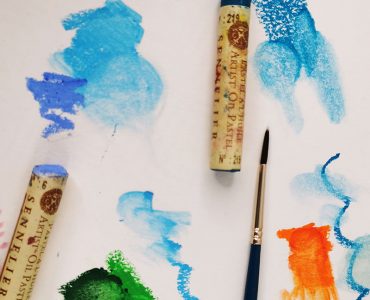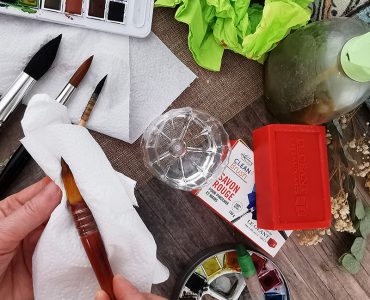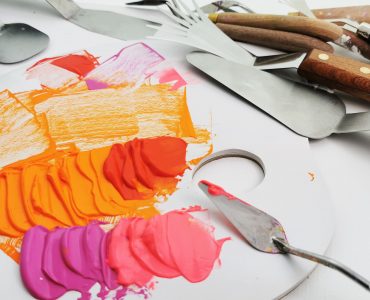How to stretch your own canvases
Mounting onto a Frame
First put the raw frame together with the stretchers, easily joined bars are available and you can even purchase ready made frames in selected sizes.
Cut the canvas to the size you require, remembering to allow for an additional 5 to 10 cm of margin on four sides, and then lay your wooden frame on top of it. Start by fixing the canvas in the middle of the first bar on the largest side, apply the staple on the thin top side which will become the canvas profile, then staple again in the same place on the opposite bar. If you are using tacks, use your hammer to fix them carefully. You can use the canvas pliers to pull the canvas tight whilst you do this. Try to keep the excess canvas even.
You can then start applying staples along the stretcher bars. Work from the first middle staple outwards towards the corners and try to keep the canvas smooth so that it doesn’t bunch between staples and remember to apply one staple then repeat on the opposite bar so that all four sides are stretched evenly. When you are approximately 5cm away from the corners fold the canvas to one a side at an angle creating a triangle and use a staple to maintain the fold before fully fixing the corner. Do the same on the opposite angle, and repeat the same operation twice more on the other corners before stapling the canvas on the back of the frame.
Preparation of the canvas
The sizing of the raw canvas protects it from atmospheric attacks such as dampness and bacteria, and solidifies it by making its surface smoother and filling the pores in the material. We usually apply one to two layers of size onto the raw canvas first and it is very important to wait until the glue is dry before proceeding. The priming, done after the gluing, will allow a better adherence and a better take up of the colours while isolating them from the canvas. White or tinted, the coating will also be an integral part of the work because it constitutes the background layer. It is recommended to use two to three gesso or primer layers to fully coat the canvas.





















My brother recommended I might like this blog. He was entirely right. This post actually made my day. You can’t imagine just how much time I had spent for this info! Thanks!